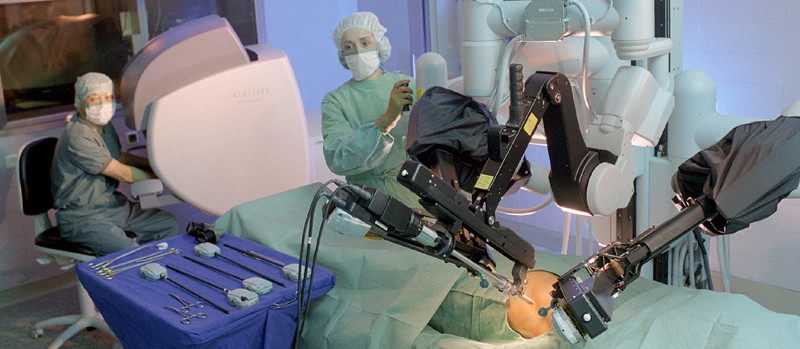What is Robotic Surgery?
In recent years, robots have started to be involved in medicine with the advancement of technology. The use of robots in the field of medicine brings along the advantages of surgical interventions with less wounds and complications and with shorter operative time.
Cases where robotic surgery is used
Regardless of the branch, robotic surgery methods can be used in all laparoscopic interventions. However, all of laparoscopic interventions, also known as closed surgery, can be performed with the help of robots. The operations in which robots are most commonly used are prostate, cardiovascular surgeries along with gallbladder surgeries and gynecologic surgeries. Since the treatment of myomas frequently seen in women has recently been performed laparoscopically, it has been the field where robotic surgery is most commonly used. Another field is gynecologic cancers and uterine prolapse. The most important factor in performing these surgeries with the help of robots is absolutely no requirement for more incisions outside the operation area. Moreover, this method, which does the least damage to the tissues around the operation area compared to other operations, is preferred due to the fact that the integrity of sterilization is not disturbed, the surgical success is high and the side effects are scarcely any. Other achievements of robotic surgery are as follows:
- Stable operations with high-resolution view: While single camera is used in laparoscopic surgeries carried out with standard methods, two high-resolution cameras can provide wider and more stable three-dimensional visual angle. Moreover, operations continue as in those performed with the naked eye by means of HD (high defination) technology that has become widespread in our country in recent years. Since robots can easily enter the areas where hands cannot intervene, the detection of small formations that are difficult to see becomes easier
- Flexible mobility: The functionality increases by means of four arms that the robots have. While one arm handles the camera, two arms handle the surgical equipment and the last one is used to hold and fix the skin or tissue to be intervened. In recent years, articulation tips can be attached to each of these arms thanks to the technology called “EndoWrist”. In this way, seven degrees of freedom and two degrees of axial rotation become possible. The degrees of movements occur in the form of three wrist movements, three arm movement, cutting and handling. The technology used in these devices eliminates all challenges encountered in open surgeries and two-dimensional laparoscopic surgeries.
- Softwares that prevent hand tremors: Under normal conditions, numerous complications may arise in open or manual laparoscopic surgeries due to hand tremors. With the developments in the technology of robotic surgery, the surgeon manages the robot from a console and the robot carries out required interventions by the signals it receives from here. In the first years when robotic surgery was started to be used, complications occurred as a result of the perception of hand tremors as an order by the command center. However, with the gradual transmission of hand tremors to the robotic arms, the command center immediately detects even small tremors and prevents the transmission of this false signal to the robotic arm. In this way, the procedures requiring extreme precision can be easily performed with robotic surgical method.
